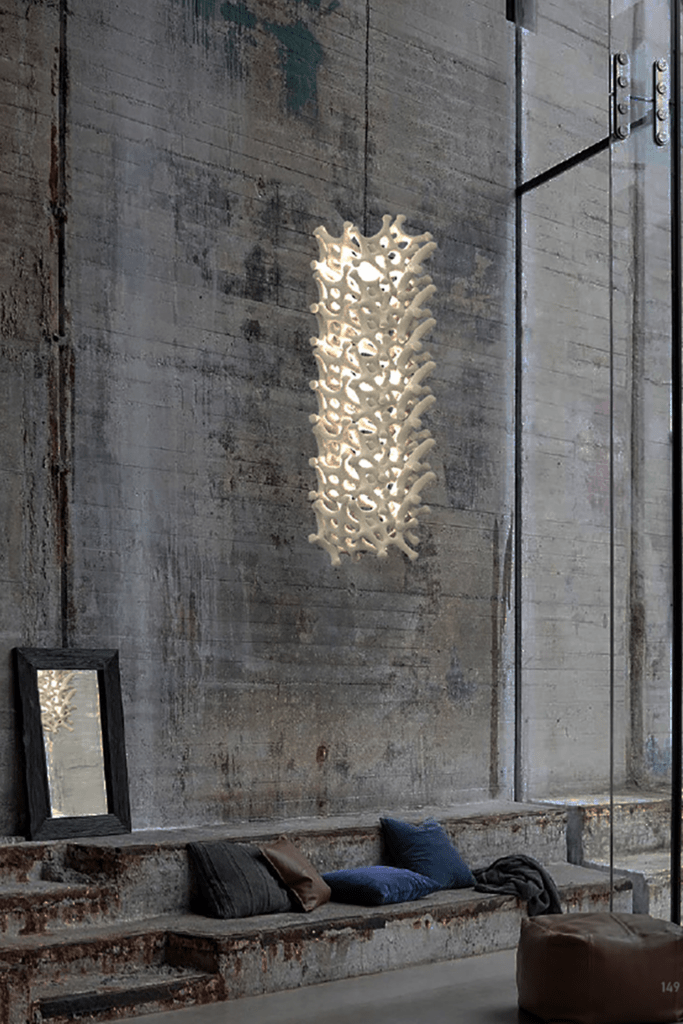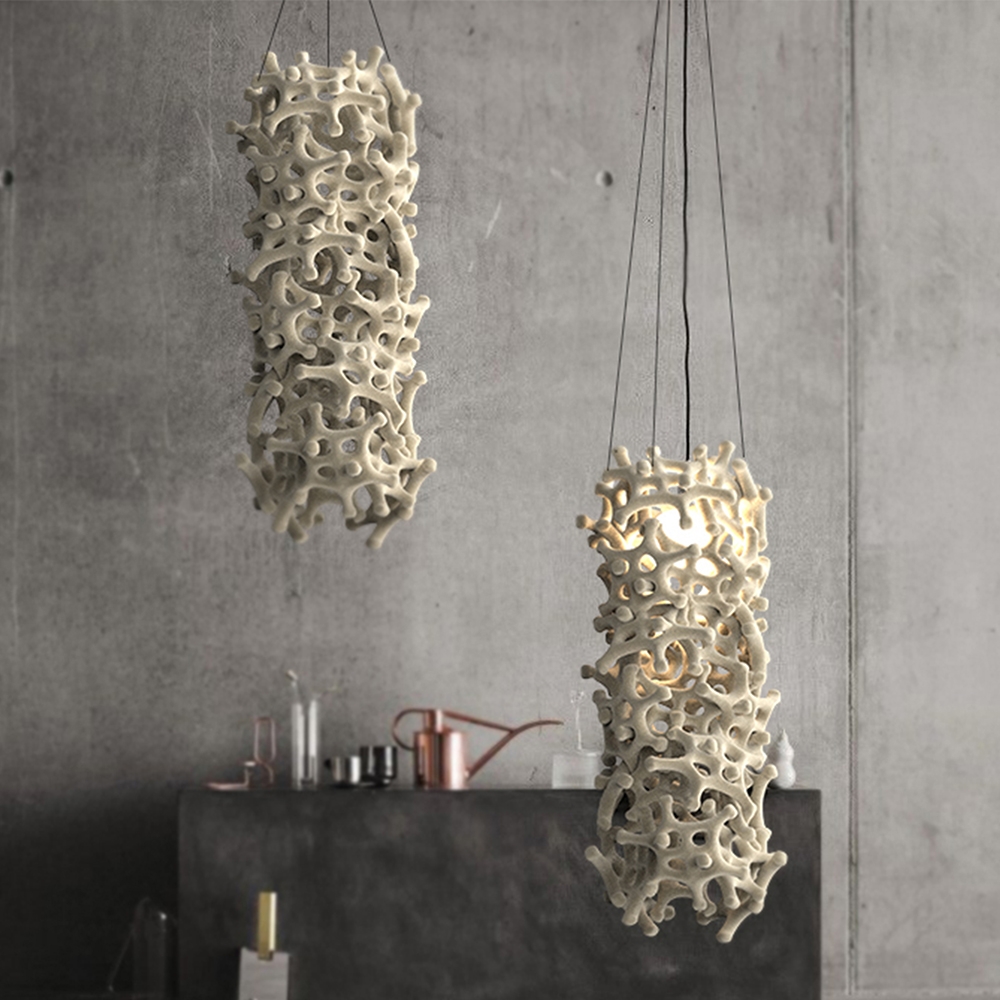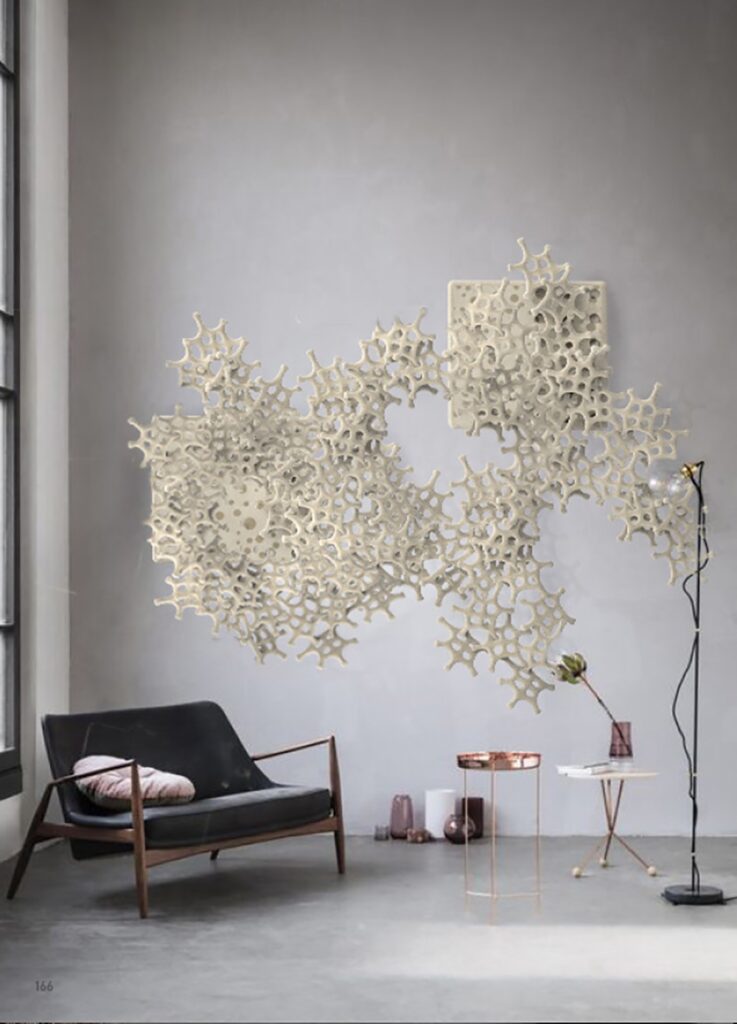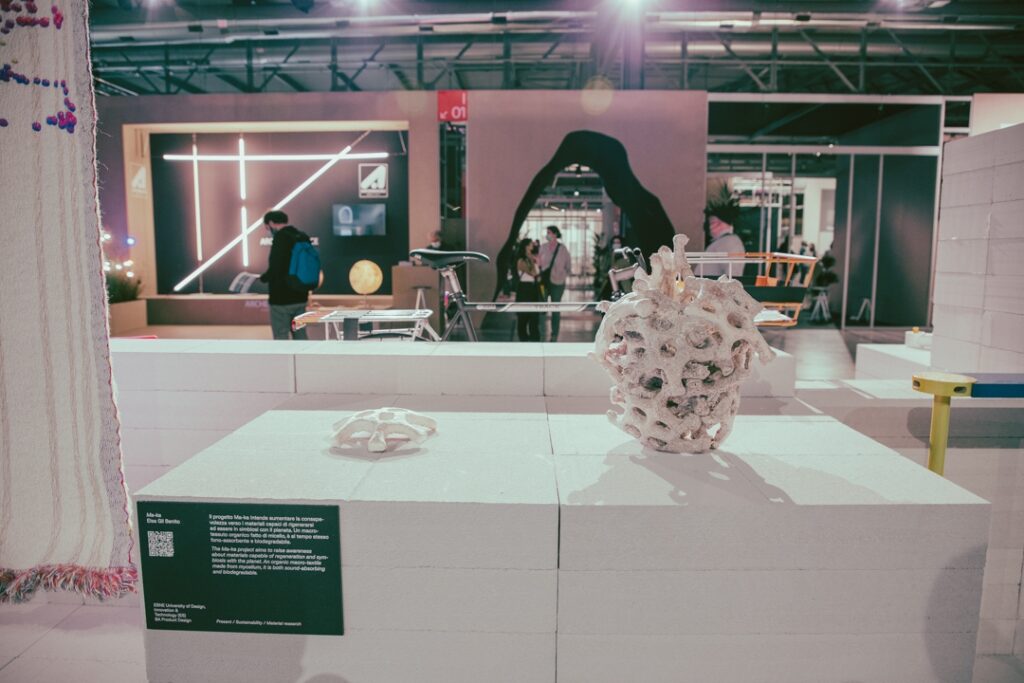Imagine an intersection where Biodesign meets lighting product design. This is the intriguing space that Elsa Gil Benito, recipient of the Emerging Lighting Product Designer of the Year 2022 at the LIT Awards with her project Ma-ka Lighting System, is currently exploring. As a student at ESNE, Escuela Universitaria de Diseño, Innovación y Tecnología, Elsa approaches her work from a unique standpoint, guided by a strong belief in sustainability and ecological responsibility.
Balancing multiple identities as a student, artist, cook, and friend, Elsa’s exploration of Biodesign is reflected in her work. Her multidimensional perspective allows her to view her projects as complete systems, rather than standalone products. This viewpoint plays a key role in her pursuit of innovative solutions within the realm of design.
One such innovative solution is the Ma-ka Lighting System. This intriguing project weaves together the concepts of Biodesign and product design, using mycelium, the thread-like component of fungi, as a primary element. The Ma-ka Lighting System introduces a biomaterial into a functional design, resulting in an eco-friendly lighting product that is as unique as it is inventive.

Photo credit: Elsa Gil Benito
Could you tell us a little about yourself?
I am Elsa Gil, an enthusiast about the world. I studied product design, and in my postgraduate studies, I specialized in Biodesign. Throughout my career, I could promote everything I knew: sustainability, humanism, the health of ecosystems, wealth, and welfare… And when I discovered this area of design in my postgraduate studies I developed all my projects around it.
But I am not just a designer. I am an artist, a cook, a friend, a traveller, a daughter, and a human being fascinated by life. I consider myself a whole ecosystem with different contexts, links, and responses to other organisms.
Being a biodesigner changed my life because it allowed me to learn from nature and be more in contact with organisms, which reminded me that we are not the only ones. Research made me realize that we are just a small ecosystem, part of a bigger one, and we need to protect and respect the whole ecosystem. But being a biodesigner wasn’t enough; I needed to make an impact in my personal life too. I’m part of a community of people who took the opportunity and found the solution in veganism and Biodesign to help our ecosystem.
I believe I’ve gained a holistic perspective through my projects, which were complete systems instead of single products. It is a good aptitude for organizing a project, the steps and thinking about which other areas could be involved or affected. I’ve been working with mycelium for two years as a designer, getting to know it from the point of view of ready-to-use materials and working with its properties without biohacking them as a consequence of a lack of resources.

Photo credit: Elsa Gil Benito
How did you discover your passion for Lighting Product Design?
I’ve always considered lighting an interactive way of working and connecting with our creations. There are many possibilities and components to create a magical environment as a result. In my case, it was through biomaterials and their incredible and unique colours. My objective was to find a substitute for the materials in these “day-to-day” products.
Why did you choose to study Lighting Products at the ESNE, Escuela Universitaria de Diseño, Innovación y Tecnología?
I decided to study product design at ESNE as a way of focusing my creativity through methodology, new ideas, experimentation, etc. But always with the intention of creating something useful. Lighting was part of different projects, and I decided to include it in my Final Project Ma-ka. Lighting was an opportunity to bring nature into our interiors.
Can you please share your creative journey behind the “Ma-Ka Lighting System”?
The project started with research, followed by inspiration, sketching, and more and more research. At the same time, I enrolled in various educational programs to deepen my understanding of the biomaterials world.
The formal development of Ma-ka was guided by the “Material Driven Design” (MDD) tool. Through it, the concepts are focused according to the characteristics of the materials, to adapt the products to them and not the other way around. Previous and theoretical knowledge about the material to be treated and experimentation are keys to knowing what you are going to work with.
Learning with materials helps bring out their maximum potential by following their properties and expanding their undiscovered possibilities. Mycelium is an organic material, and it is through the forms, techniques, and communication of Ma-ka that this knowledge about nature is collected.

Photo credit: Elsa Gil Benito
The Lighting System is made of a biomaterial, can you please explain how you create it and how long it takes? What are the benefits of it?
Mycelium can be described as the roots of mushrooms. It is considered one of the most powerful biomaterials with low cost, requirements, and ingredients. However, there are a lot of possibilities for contamination during the growing process. That’s why for the project I decided to buy Grow It Yourself kits: a useful resource to learn how to work with it and reduce the contamination range.
I fabricated my own thermoformed moulds from my digital design. These moulds are the ones that give shape to the mycelium, which adapts to its container. After an incubation period of four days, I took them off the moulds and attached several pieces by hand, creating the final column. The mycelium keeps growing, so the structure can be bio-assembled by its expansion. For this big product, the whole process took me two weeks, including the drying step.
The potential of micomaterials becomes clear when we know their properties and understand that they can be compared to various traditional materials. For example, chipboard, whose production starts with sawdust or wood chips agglutinated with special resins, so that it has the desired texture, density, and resistance. It can be applied to architecture, interior design, products, etc. It is possible to manufacture chipboard, petroleum-derived plastics, and even fabrics for the textile industry from mycelium. Depending on how they are cultivated, they can have similar properties without the need to use resins or chemical gums. Mycelium is responsible for naturally binding the raw material. Depending on the object to be designed, we will have to consider different production models to achieve different properties.
You are just starting your career as a Lighting Product Designer, what do you want to do next? What are your dreams?
Right now I am planning to start my journey in a PhD program, as I believe that it is through education and research that Biodesign can enter our daily lives. My dream is to have my own design studio where I could develop my projects and, at the same time, teach and do research. My objective is to keep learning.
Last, what makes light magical to you?
For me, light becomes magical when there’s a game purpose: when you can decide to play with its shadows and create your own magical environment.

Photo credit: Elsa Gil Benito
From our conversation with Elsa Gil Benito, it’s clear that her passion for Biodesign and sustainable solutions drives her explorations in the realm of design. The Ma-ka Lighting System exhibits the designer’s commitment to integrating sustainable materials into functional designs.
As Elsa continues her academic journey and delves deeper into the intersection of Biodesign and lighting design, her work hints at a promising future. She demonstrates that innovative and sustainable design practices are not just concepts to be studied, but can be effectively put into practice, even during one’s formative years in design education. This emerging designer is certainly one to watch as she continues to learn, explore, and challenge the conventional boundaries of design.










